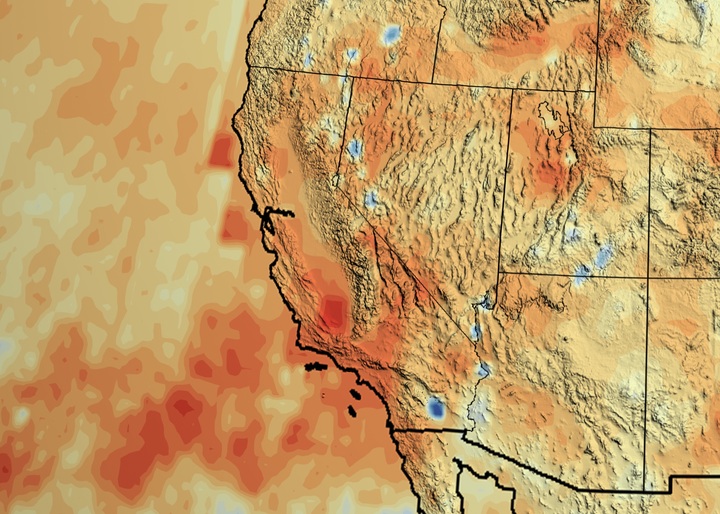Over the last three years, rainfall has been so greatly reduced in California, it’s as if the state’s lost a year’s worth of rain, according to a new analysis.
The research puts a precise number on the extent of California’s current drought. It also provides satellite data to underscore how variable California’s rainfall naturally is—something Californians have long noticed, much to their chagrin. In fact, between 1986 and 1994, California experienced a rain deficit that’s similar to what the state is experiencing now, the analysis found. Surely such droughts will happen again, especially as some research has found climate change will make California’s droughts more frequent and severe.
One major problem is that California depends on an atmospheric phenomenon informally called the Pineapple Express to bring the state as much as 50 percent of its precipitation per year. The Pineapple Express comprises streams of water-laden air that originate over the tropical Pacific Ocean, then flow east over North America, where they break. But a high-pressure system sitting over the eastern Pacific Ocean can keep these streams of air, called atmospheric rivers, from forming. One such high-pressure system has been hanging out over the eastern Pacific since 2011.

In recent months, climate scientists have noticed El Niño conditions forming in the Pacific Ocean, which may bring more precipitation to the Golden State. But don’t get your hopes up too high—according to the new research, which comes from NASA’s Goddard Space Flight Center, over the past three decades, El Niño conditions have altered California’s precipitation by six percent at most. The coming El Niño is expected to be one of the strongest in the past century, but it will still take a few years of rain to make up for the deficit that the state has been accumulating since 2011.
No word from the new study about when the high-pressure system is expected to leave.




